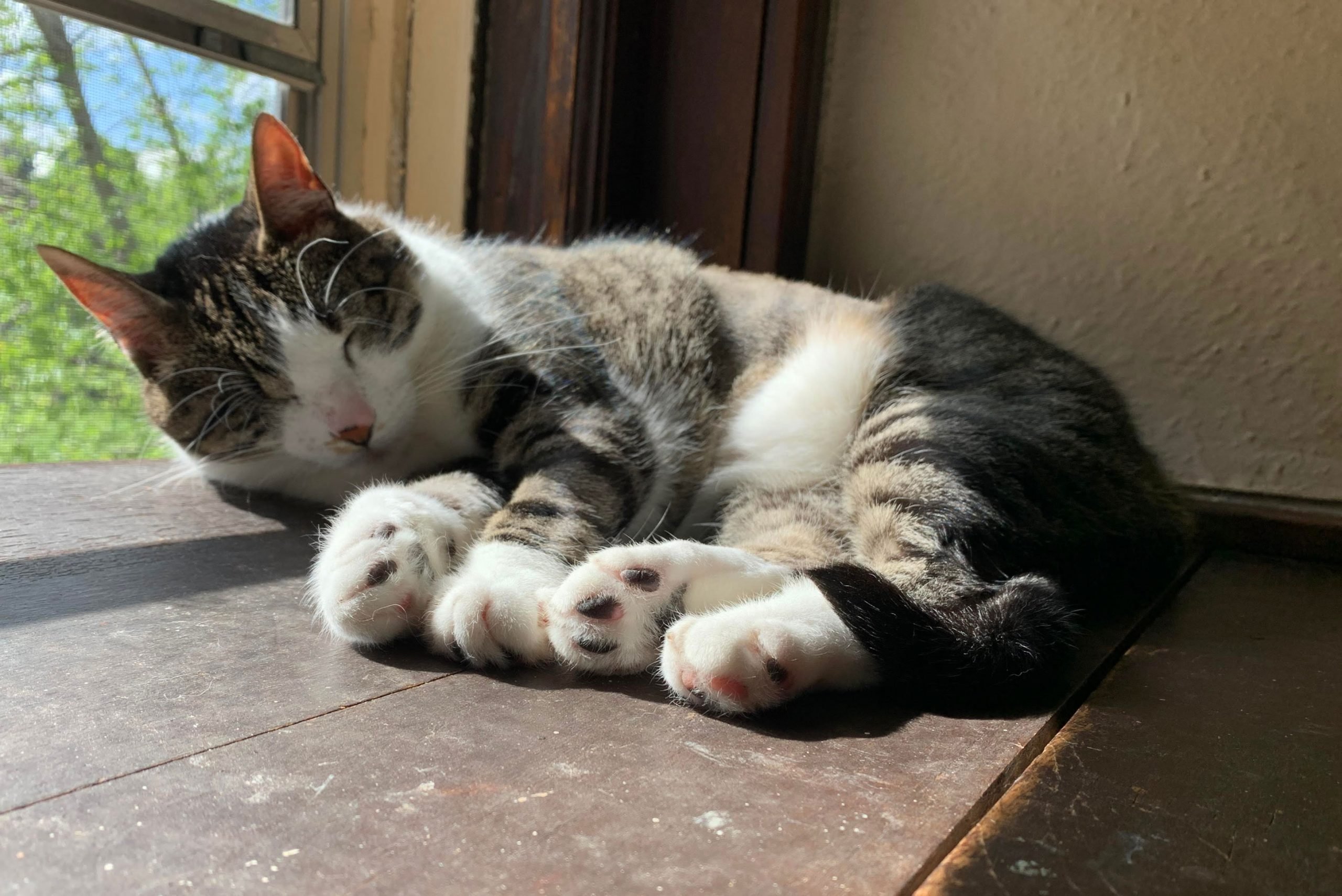You’ve just taken your first step into a larger world and decided to get a cat. You’ve never had a cat before. What do you do? How do you begin? What do you need to give this new friend their best chance at success? Whether you’re getting a kitten or adopting an adult cat from a shelter, the basic needs are pretty much the same.
When you bring a cat home, you’ll want to set them up with their own space. This can be a bathroom, a spare bedroom, a closet, any space that’s small enough for them to feel safe. Cats are all about territory, and feeling like they have a space that’s their own will help them get used to their new surroundings faster. They may hide under a bed or behind a door, but it won’t last forever. Just give them time and let them come to you. The primary way to build a relationship with your new friend is by building trust.
One of the things that’s most important is to have all your supplies together when you first bring kitty home so that they’ll be able to acclimate to their new surroundings as quickly and easily as possible. Let’s take a look at what you need.
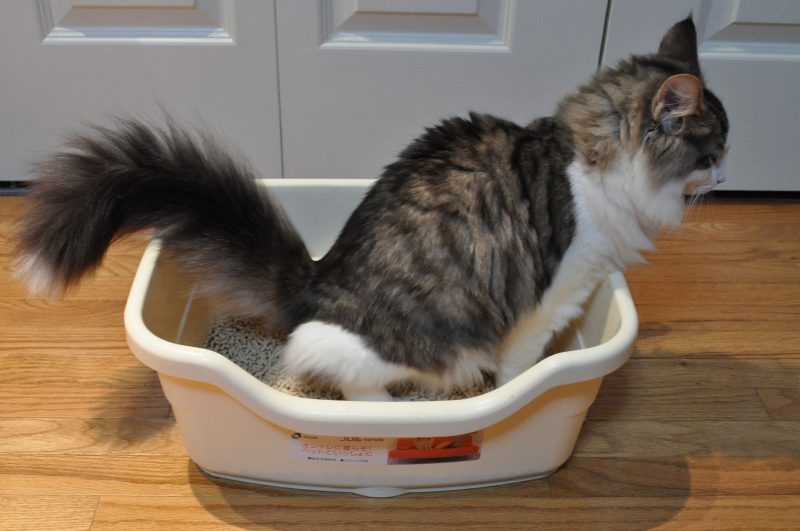
Litter Box
Everybody knows a cat needs a litter box. That’s just part of the deal. But there are a lot of different boxes to choose from. It’s important, especially for kittens, that they learn how to use the litter box properly and feel comfortable doing so. Cats that are uncomfortable using the litter box for whatever reason will use whatever they find as an alternate litter box, and nobody needs that kind of mess.
There are lots of different types of litter boxes: short pans, tall pans, boxes with covered lids, boxes that fit in a corner, boxes that can only be entered from above, and on and on. So which style of litter box is best? That’s really up to your cat. For some cats, going to the litter box is a very vulnerable situation for them, so they like to be able to see everything around them. Others prefer the privacy of a covered box. Some cats kick litter up everywhere and so need higher sides on their boxes. Some are very genteel and don’t need that kind of barrier.
But no matter what, you want the entrance to the box to be low enough that it’s not uncomfortable or difficult to get in. That means the top-entrance litter boxes aren’t usually a great fit, especially for kittens or older cats.
The type of litter you use also plays a part in how comfortable your cat feels using the litter box. Cats generally prefer the fine particles we generally think of as kitty litter, as opposed to the larger pellets. This makes sense, as their litter box behavior is tied to their beginnings as desert-dwelling cats that buried their waste in sand. They also tend to prefer unscented litter. We know it’s tempting to get that scented litter to mitigate the smell of the litter box, but cats’ sense of smell is much stronger than ours; strong scents like that can be a bit of a turn-off.
Now for the number of litter boxes. The general rule of thumb is that you want a litter box for each cat, plus one extra litter box. So if you’ve got one cat, two is the magic number.
Where to put the litter boxes? You want to put it somewhere the cat will use it. Don’t put it somewhere the cat never goes (like in an attic or basement), and keep it in a relatively low-traffic area that’s well-lit and always accessible. Avoid putting them in a room with noisy appliances, like a laundry room, as the noise may startle a cat and dissuade them from using the box. And cats tend to not like their food and water being near their litter box, so make sure to provide plenty of distance between them.
You’ll want to scoop every day to keep the box fresh and empty for them to do their business. And clean the box with soap and water once a week, replenishing with new litter.
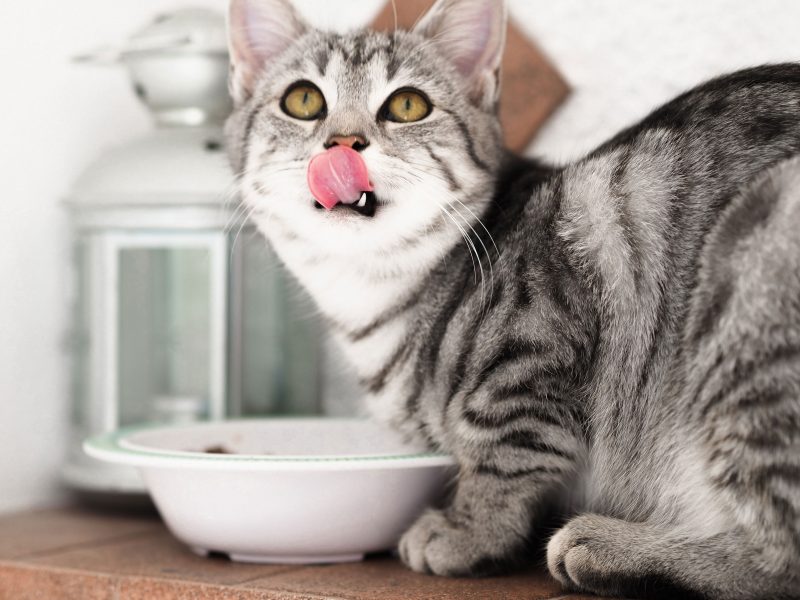
Food and Water
All living things need food and water, and cats are obviously no exception. But what kind of food? How much water? And how often?
Cats are creatures of habit, so feeding them at the same time every day makes sure they’re happy (otherwise you may get the stare of death if you wait too long). Most cats from 6 months old onward should be fed 2-3 times a day.
The type of food you get your cat is important. First, you want to make sure you’re getting a food that’s appropriate for your cat’s age. If you’re bringing home a kitten, make sure you’ve got kitten food. Taking in a senior who needs a loving home? Make sure you’re feeding them something appropriate for older cats. These foods are formulated with their specific nutritional needs in mind. Kittens are growing fast, and need the nutrients to sustain that growth. Older cats’ growth has slowed, so their nutritional needs are primarily maintaining their weight.
Wet or dry food? That’s the question. Cats are obligate carnivores, meaning protein should be about 70% of their diet. It also means they have a harder time digesting carbohydrates. So while dry food may be more affordable, wet food tends to give them a better nutritional balance. Plus it provides them with extra water, which helps them stay healthy.
As far as water goes, a nice, clean bowl of water every day is important. Plastic bowls can actually cause chin acne on cats, so going with stainless steel or glass bowls is your best bet. Even better than that, pick up a fountain so that their water is constantly circulating and being filtered.
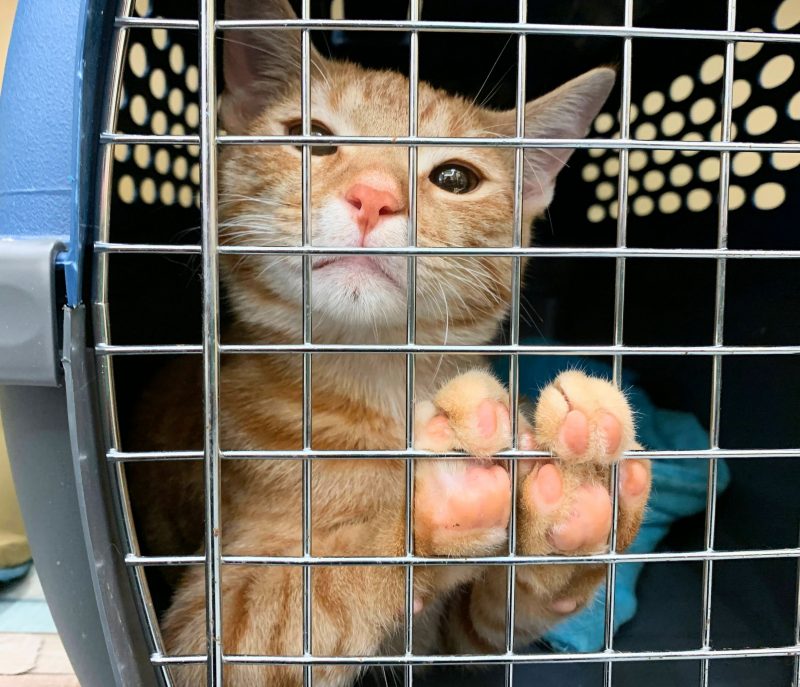
Carrier
Not all carriers are the same. Generally speaking it’s good to get a hard carrier that can open at both the top and the front, and can be unlatched and taken apart. Some vets will keep the cat in the carrier because that’s where they feel safest, and then will just remove the top to do the exam. Having opaque sides that the cat can’t see through also helps them feel protected and safe.
A quick tip: keep the carrier out and make it inviting for them. Put treats and toys inside, or a blanket. This gets them used to the carrier as a safe place so they don’t get as scared when it’s time for them to go somewhere.
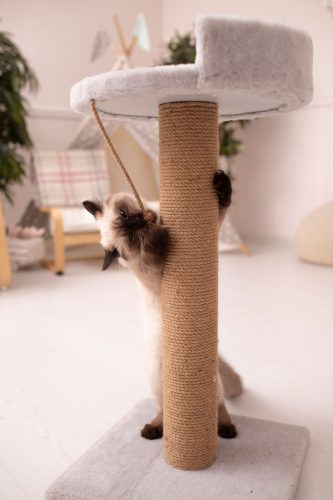
Scratching Post
This is a big one. Cats scratch things. It’s natural behavior for them. It sharpens their claws, allows them to mark territory, and is a way for them to stretch muscles that don’t get stretched any other way. Overall, scratching makes them feel more safe and secure in their environment. Rather than being discouraged, scratching should be encouraged as a part of your kitty’s natural life. But obviously you don’t want them scratching just anything, and that’s where the scratching post comes in.
You want a scratching post that allows them to stretch out fully, at least 30 inches tall or so. A lot of scratching posts come with carpet on them, which is okay, but if you’re trying to get them to stop scratching your own carpet, giving them a tower that’s covered in the same material isn’t really going to teach them the lesson. Cats really tend to like sisal rope or sisal fabric for scratching. It shreds well under their claws, which they really like. Just make sure it has a sturdy base so that when your cat goes ham on it, it won’t fall over and scare or hurt them.
Cats also like to stretch out horizontally. For this, a cardboard scratcher is best. There are a lot of relatively inexpensive angled horizontal scratchers that’ll let kitty get that good stretch in while doing what comes natural to them.
If you’re having trouble with them scratching things they’re not supposed to, you can use sprays like Bitter Yuck to deter them from messing with things they’re not supposed to. You can also use an attractant like catnip on the scratching pad or post to make it more enticing for them.
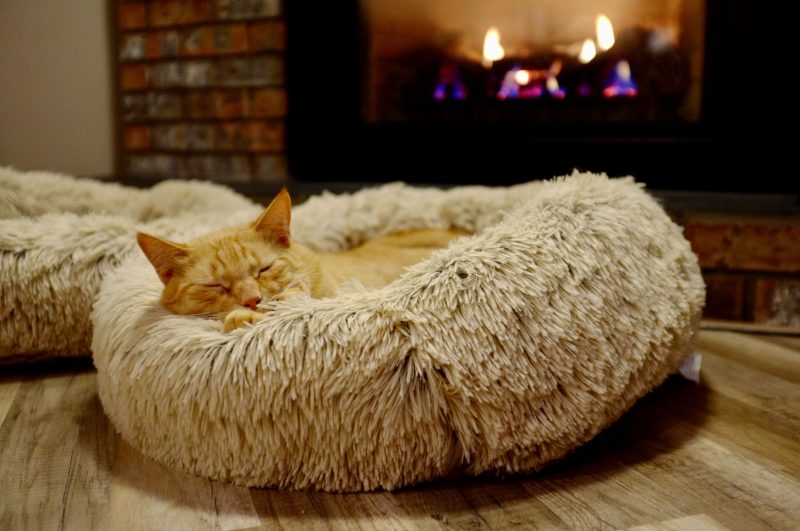
Bed
This isn’t an absolute necessity, and if you’re like me, your cats don’t need a bed because they sleep in yours. But it’s a good idea, especially when you’re first starting out, to get something for them to use. After all, they sleep 12 to 16 hours a day, so maybe they want a little bed of their own to use.
What bed you get is going to depend on your cat’s personality. Do they like to look out the window? A window bed might be in order. Are they nervous or shy? A covered bed that allows them some privacy might do the trick. Do they like to sit on heating vents? Then consider one a self-heating bed that retains their body heat better. Do your due diligence before kitty comes home to get a feeling for what they might want. And no matter what you get, consider how easy or hard it’ll be to clean before making a final decision.
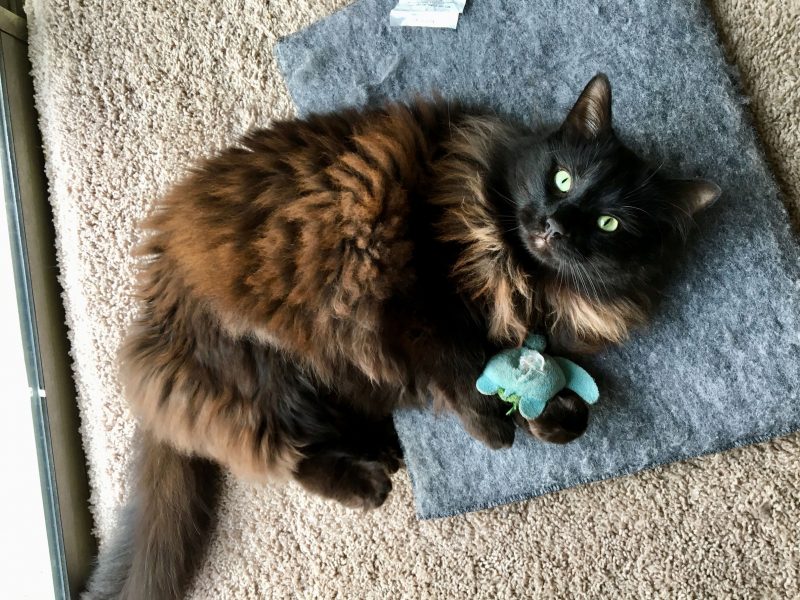
Toys
Quick tips: toys that mimic prey are best. In addition, cats can get bored of toys pretty easily, so don’t go investing your life savings in the latest and greatest automatic laser pointer/bubble blower cat toy.
Kittens will play with and attack anything. That includes your hands and feet. This is why getting them toys is so important: it teaches them when it’s appropriate to play and when it’s not. Up until about 21 weeks, most kittens are fine with whatever you give them. They have tons of energy and are exploring their world, so they’re pretty much up for anything.
After about 21 weeks or so, cats become less interested in toys that don’t move on their own. This doesn’t mean you’ll spend the rest of your life with the kitty fishing pole in hand, responding to your cat’s beck and call (though you can if you want to; they probably wouldn’t mind). But also keep in mind that sometimes the best toys are the cheapest ones. I discovered that Tenar the one-eyed wonder actually loves a plastic Easter egg with a little ball inside. When we roll the egg, the ball inside throws it off-balance, and it moves in unpredictable ways, just like prey would.
The reason that play is so important for cats in general is because it gives them stimulation and enrichment. It keeps them from getting bored. And believe me, if your cat isn’t getting enrichment from you, they’ll get it some other way, which may mean them being destructive or acting out in ways that are inappropriate.
Keep in mind that if you’re using a toy with string, like a fishing pole, to put it away when you’re done using it. We know the old trope about a cat playing with a ball of yarn, but string and yarn are actually dangerous for cats. If they swallow the string, it can cause serious intestinal problems that would require surgery.
Another way for your cat to get enrichment is to get them a puzzle feeder. Not only does it make them work out a puzzle to get their food, but it can provide a little bit of a barrier for a cat that likes to spend a little too much time at the food bowl.
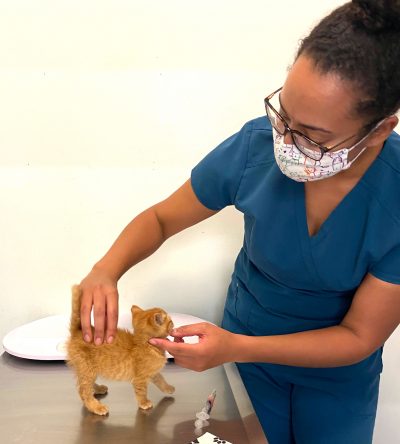
Vet Appointment
Surprised to see this one? You shouldn’t be. Even if you’re getting a cat from a shelter that’s been vetted, it’s still a good idea to set them up with an appointment for your vet. Establishing baseline numbers for your cat’s vitals will come in handy if something’s off in the future. Your vet will also be able to answer any questions you have about cat care, as well as give you insight as to what they notice personality-wise. In addition, it’s important to get kittens acclimated to going to the vet so that as they grow up they aren’t fearful of a trip to get checked out.
Getting your first cat is an exciting adventure. Cats, despite the reputation they’ve gotten, are actually friendly, social, sweet creatures that will warm up to you and treat you like family if you understand what they need and what makes them comfortable. These tips should get you on the right path. If you need help with supplies for your cat, you can always reach out to us. We want to make sure you and your cat live a long, happy life together.
